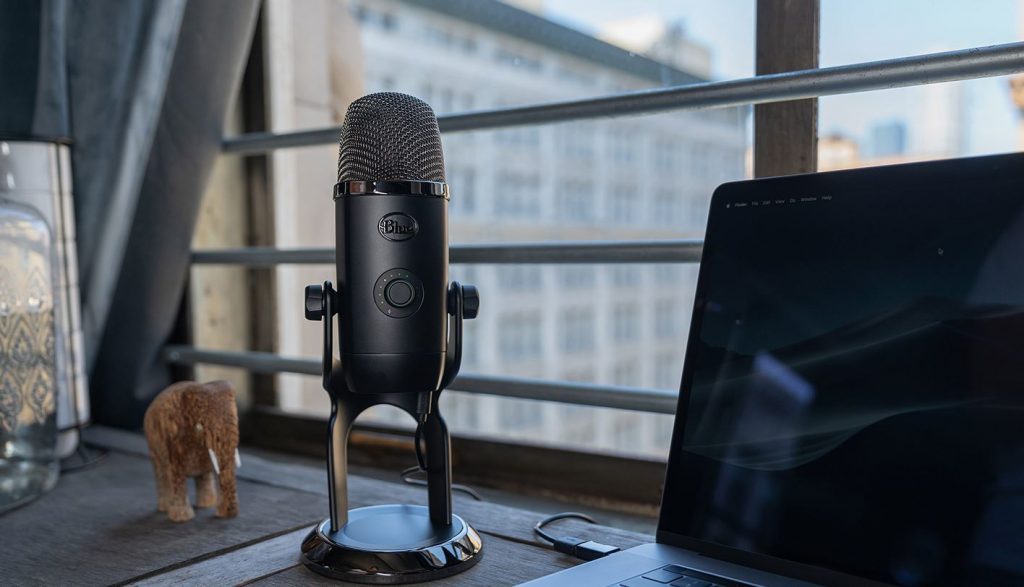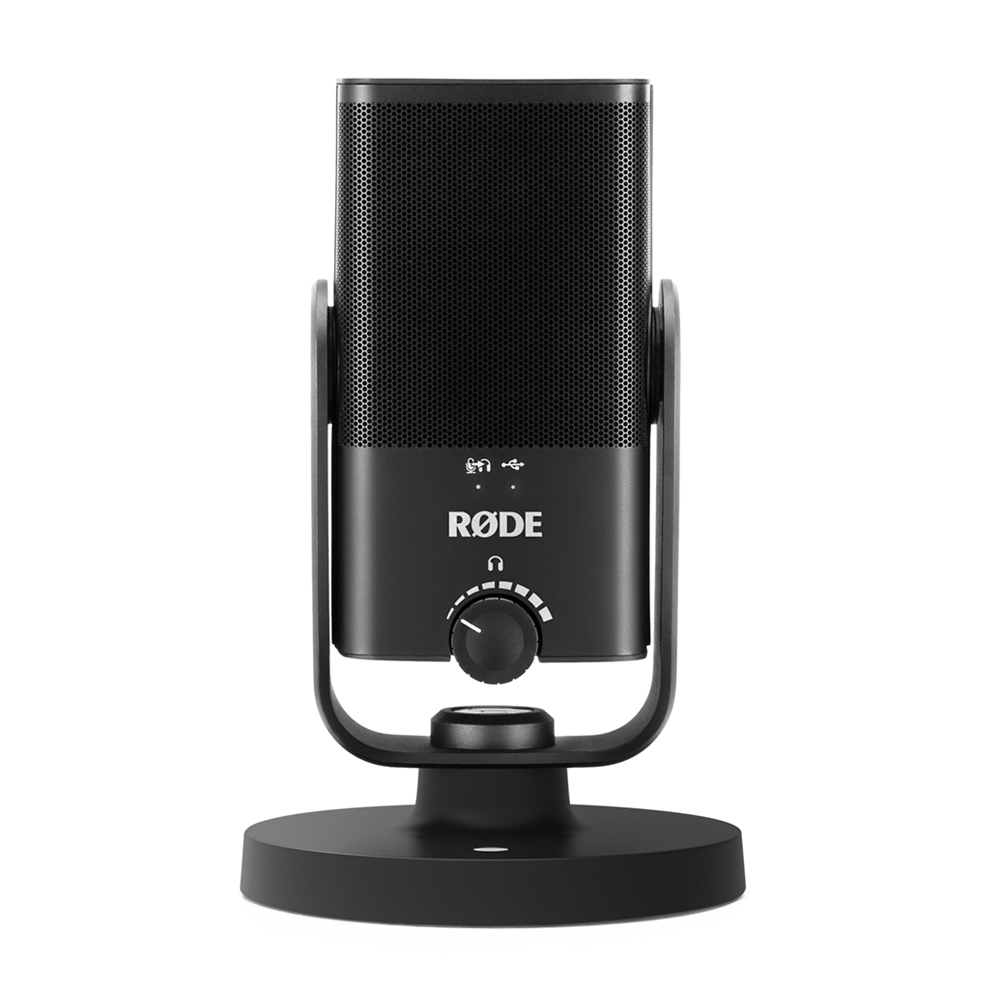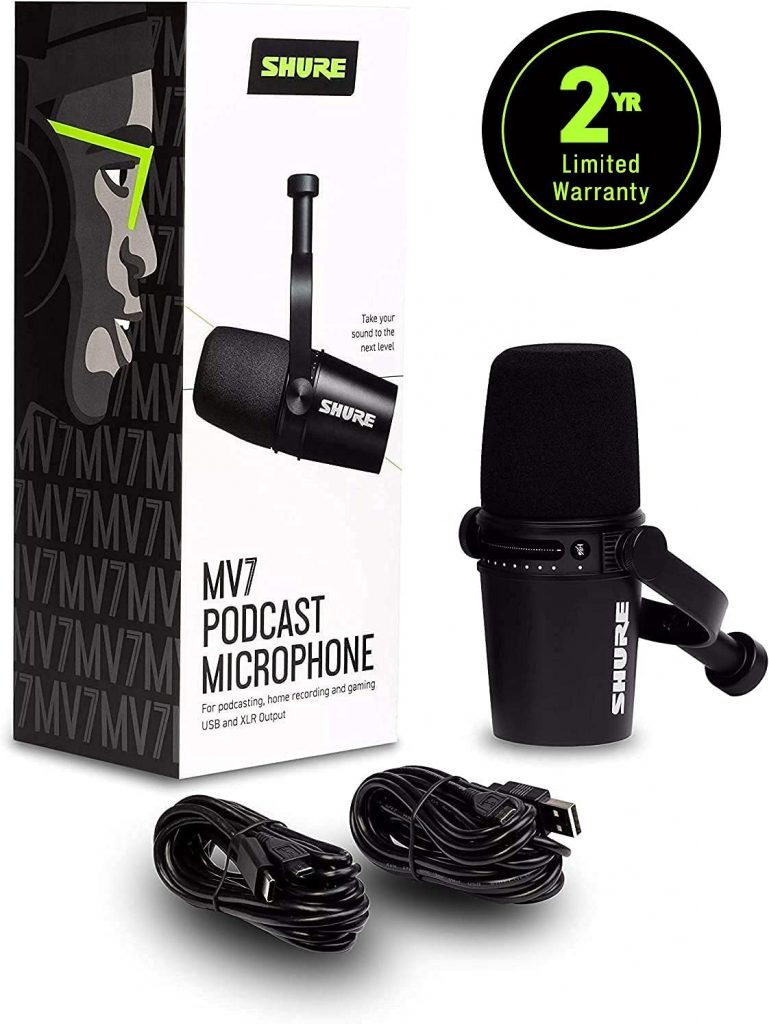We’ve been busy researching USB microphones to help you figure out what you need to make your best audio and video content and stay on budget.
Links to all the products on Amazon are included, as well as on other online retailers where available. Links are regionalised to your local Amazon store where possible.
The mics that we’ve selected are all strong contenders for podcasting or making music.
Let’s get into it.
Blue Yeti X

The original Blue Yeti is one of the more recognisable USB microphones on the market.
The Blue Yeti X updates the classic with a slightly new look and features, including LED metering, a four-condenser capsule array and BlueVoice recording software.
Unlike many USB mics under $200, the Yeti X uses no digital signal processing, or DSP, which allows greater flexibility and a cleaner, EQ- and compression-free signal while recording.
All this makes it a versatile, multi-pattern mic and a solid update to the original.
The various mic patterns add versatility here. The figure-8 pattern can be a great way to record two speakers facing each other, while the omnidirectional pattern is a good way to pick up general ambient sounds in your environment in addition to your primary sound source.
This is a mic that offers a clear, robust signal, four useful patterns and can be just as comfortable recording vocals as it is recording musical instruments.
Buy Blue Yeti X – (PAID LINK) – https://geni.us/EnRi
RØDE NT-USB Mini

This is a no-nonsense USB mic which is both compact and easy to operate.
Its fixed cardioid pattern is useful for recording vocals or instruments, and is also suitable for gaming, podcasting and conference calls.
On its front panel, there’s a headphone volume knob, as well as two LEDs that tell you when the mic is powered via USB or when you’re in zero-latency monitoring mode. Pressing the volume knob turns zero-latency mode on or off.
The back panel houses the connections for the included USB-C cable, as well as the 3.5mm headphone jack.
The internal headphone amp is suitable for high-impedance headphones and should work just fine with any typical studio monitor-style headphones.
The top portion of both front and back panels is covered in metallic grille, behind which is a built-in pop filter and a condenser capsule with a fixed cardioid pattern, delivering a frequency range of 20Hz to 20kHz.
The NT-USB Mini delivers a depth of 24 bits and a 48kHz sample rate.
Internally, a pop filter helps guard against plosives.
The cardioid pattern does a good job of zeroing in on the recording subject and dialing back room audio originating from the opposite direction.
The NT-USB Mini is a crisp, clear USB microphone.
The NT-USB Mini is another solid option in this price range that sounds particularly strong when the levels are right.
Buy the RØDE NT-USB Mini – (PAID LINK) – https://geni.us/0OS1
Samson Q2U

The flexibility of this microphone throws the doors right open here. Whether you’re a podcaster or the lead singer in a band, this is a durable, affordable and handy microphone to have around.
Being a dynamic microphone with a cardioid pickup pattern it’s ideally suited to picking up vocals, whilst rejecting much of the sounds around and behind it.
Regardless of what microphone you’re using, it’s always good to record your podcasts in a quiet, sound-dampened room, unless you’re going for a field-recorded “in the moment” effect. Nevertheless, the Samson Q2U is pretty forgiving of less-than-ideal recording conditions.
Whilst almost every other microphone has a USB cable to plug into your computer OR an XLR cable to plug into your mixer or recorder, the Q2U has both. This gives you all sorts of flexibility when recording your podcast.
Having both a USB and XLR connection means you can even record through both simultaneously. If you’re doing an important interview on-location and are scared of something breaking, this is a comforting safety net to have in place.
The Q2U is a real swiss-army knife for podcasting or vocals, fitting just about any context you can throw at it.
It’s hard to look past the Samson Q2U.
Buy the Samson Q2U – (PAID LINK) – https://geni.us/7vYdcAR
Apogee MiC Plus

The metal and plastic composition of the MiC Plus uses a fairly traditional front-address condenser mic build.
A large grille up top protects the cardioid capsule, which is to be addressed from the front-facing panel.
Below the grille, it’s a fairly straightforward USB mic, including a gain knob, which doubles as a mute button, with three multicoloured status LEDs above it. There’s a 3.5mm headphone jack on the bottom panel and a USB port.
A Blend button located between the gain knob and the status LEDs allows you to adjust the headphone mix between a mic-signal-heavy mix and a computer-signal-heavy mix.
The status LEDs also become level indicators when adjusting gain.
The MiC Plus offers excellent clarity, as you’d expect from this brand.
Buy the Apogee MiC Plus – (PAID LINK) – https://geni.us/QxPjTy
Shure MV7

The Shure MV7 is a dynamic microphone with USB and XLR outputs.
It’s available with black or silver metallic enclosures, and the MV7’s capsule is covered by a screw-on foam pop filter.
The MV7’s capsule has a cardioid pattern and a frequency range of 50Hz to 16kHz, and the mic’s analogue-to-digital converter can record 16-bit or 24-bit audio at 44.1kHz or 48kHz.
The MV7’s swivel mount is designed to screw into any standard mic stand.
In XLR mode, as is to be expected, the onboard gain controls no longer work, nor does the headphone output and obviously not the Motiv app’s digital signal processing. It’s a pure analog signal with no DSP.
Buy the Shure MV7 – (PAID LINK) – https://geni.us/KcHAnJ1